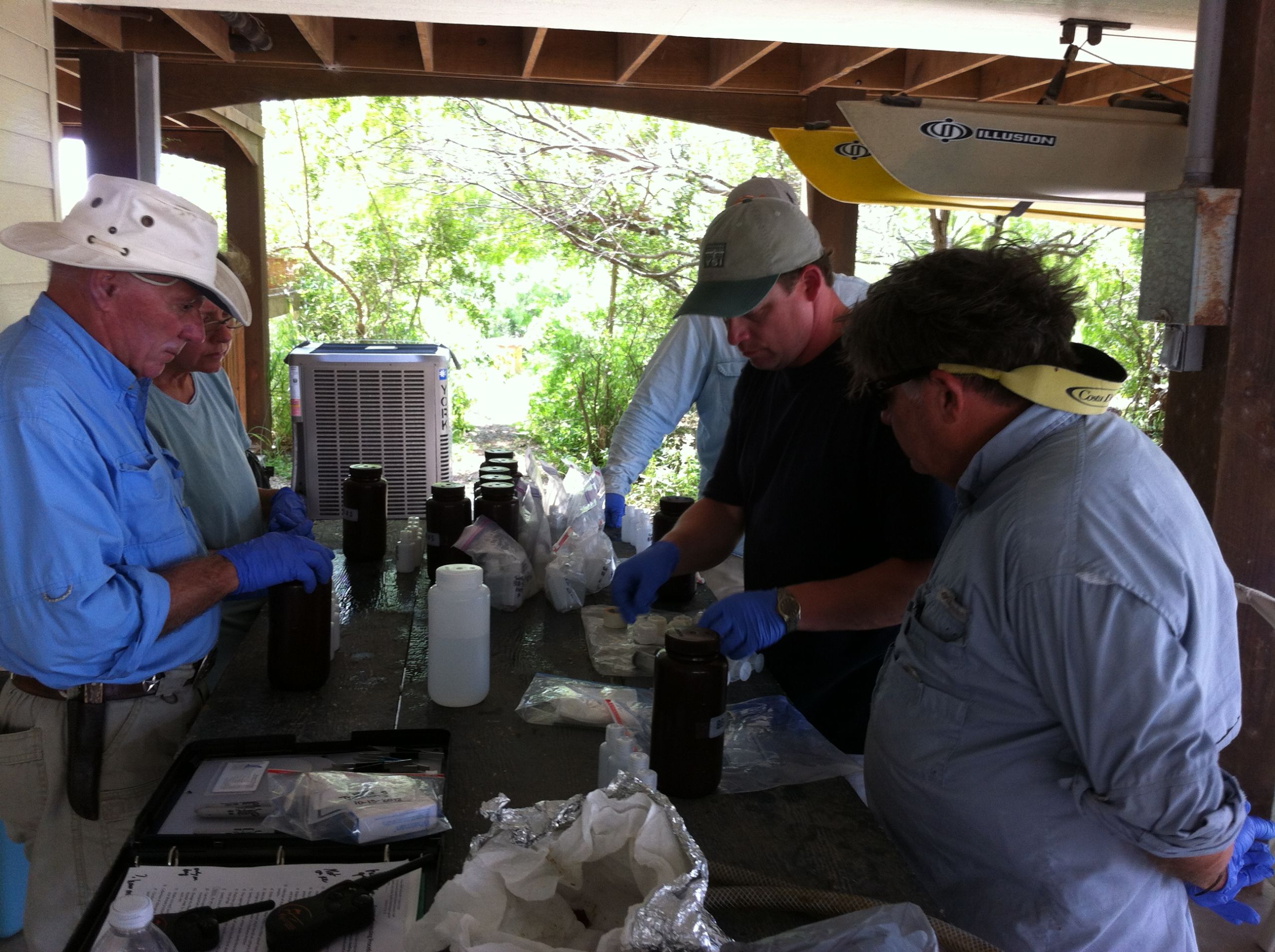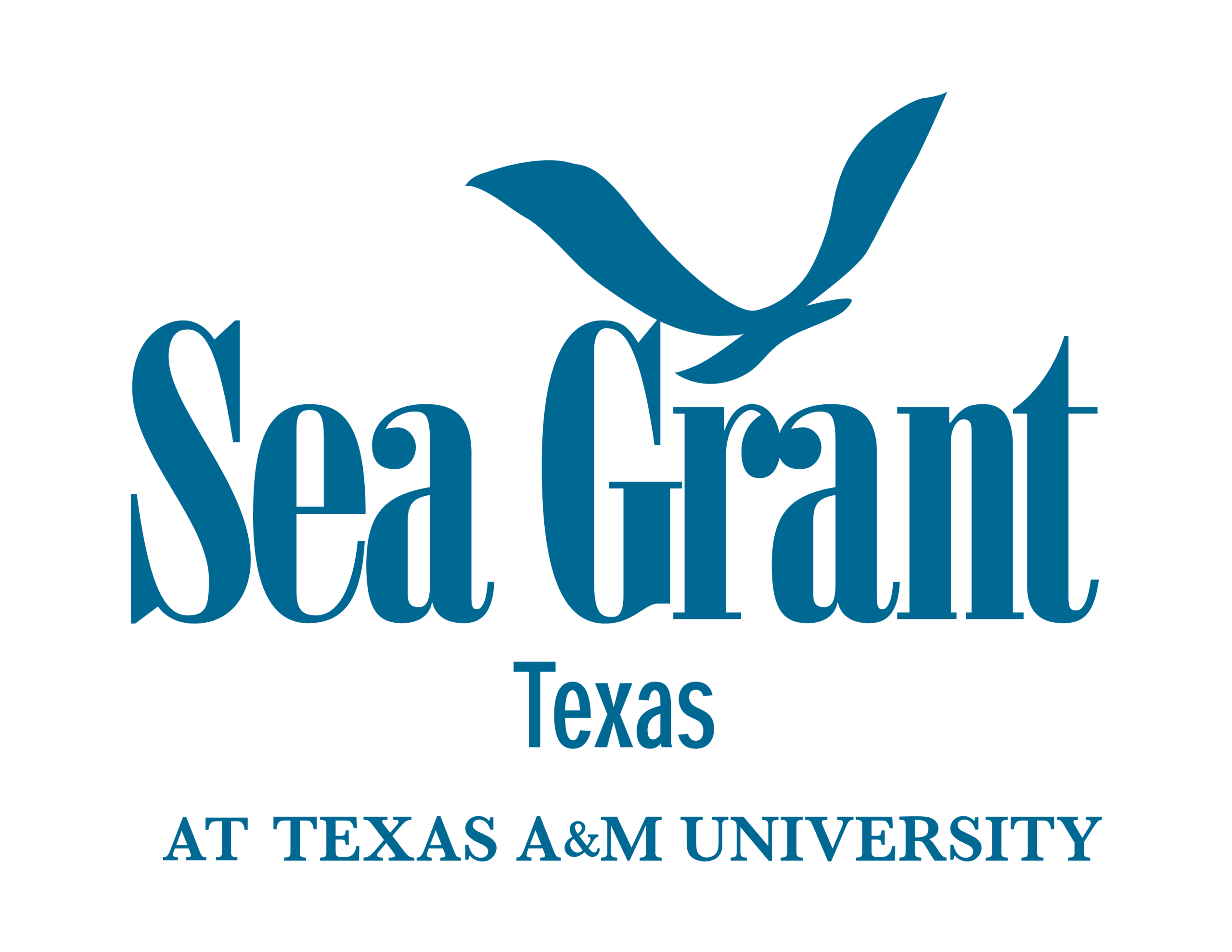All Hands on Deck
How Researchers and Citizen Scientists Helped an Iconic Texas Bay

Baffin Bay, often revered by fishermen and researchers alike, is located about 50 miles south of Corpus Christi, Texas. This iconic area is well known for great commercial and recreational fishing along with scenic shoreline views, and it is part of the invaluable Laguna Madre ecosystem along the Gulf of Mexico.
However, in 2012, a water quality analysis of the bay showed the waters were being over-enriched with nutrients like nitrogen and phosphorus, leading to algal overgrowth and lower oxygen levels, or hypoxia, significantly harming this treasured ecosystem. Since 1990, persistent brown tide blooms have led to sea grass die-offs in both Baffin Bay and the upper Laguna Madre. In addition, large fish kills that occurred in 2007, 2010, and 2012 were associated with hypoxia in the bay.

There are a variety of factors that can cause hypoxia, including a high volume of algae and the bacteria that consume it, as well as natural conditions like wind, temperature, or salinity shifts. These hypoxic events were wreaking havoc on the ecosystems associated with Baffin Bay, and citizens were starting to take notice.
Locals began to raise concerns about the regular brown tide algal blooms and the deteriorating health of the ecosystem. Long-time Baffin Bay users suggested that these symptoms of declining ecosystem health were unprecedented compared to conditions prior to the 1980s.

A TEAM EFFORT
To address concerns from citizens around Baffin Bay, Dr. Michael Wetz, Harte Research Institute chair for Coastal Ecosystem Processes, along with fellow researchers from Texas A&M University–Corpus Christi (TAMUCC), established a rigorous water quality analysis program with the assistance of volunteers from surrounding communities in 2013.
What makes this research especially unique is the use of citizen scientists to collect and report data. “For some of the potential water quality issues that the bay was facing, we knew that it was going to take a real team effort, a stakeholder effort, to fix any problems,” says Wetz. “There wasn't a routine water quality sampling that would help us to really pinpoint what the issues were. So from that, we recruited citizens.”
The goal of this volunteer water quality analysis program was to determine when and where the symptoms of water quality degradation were most severe throughout the bay. After four years of sampling, the data from the program showed that chlorophyll levels, which contribute to algal overgrowth, exceeded state limits for the majority of the time in Baffin Bay. The prevalence of chlorophyll was also partially responsible for decreased oxygen levels in the bay.
The study also revealed some unique qualities about Baffin Bay. “Unlike a lot of the Gulf and East Coast estuaries, where these events happen mainly during the summer, it seems like in Baffin Bay it can happen year-round at just about any time,” says Wetz. “We've detected fairly significant hypoxic events as late as December and sometimes even into January."
The program relied on a group of about15 volunteers including recreational fishermen, business, and property owners, and other invested parties. This group would take two boats around the bay to collect samples and report data to TAMUCC researchers. Wetz recalls, “They were just a huge help to us and helped us get the data we needed to really figure out what was going on down there.”
Volunteers helped the water quality research go beyond the scope of routine sampling and helped researchers get a better picture of the overall health of the bay. For four years these volunteers committed their time and resources to collecting samples and proposing solutions for the area.
“Essentially, we utilized our own boats and our personal time to perform water quality sampling,” says Scott Murray, an active coastal conservationist and local stakeholder who helped the program. “I was just thankful to be able to do something positive for a unique Texas treasure like Baffin Bay: it is very special."


A BRIGHTER FUTURE
In 2017, the research group took over sampling the bay, and the citizen scientists became part of a stakeholder group that contributes to planning processes and remains invested in the overall health of Baffin Bay. Now, members of the stakeholder group, which includes concerned citizens, volunteers, and Texas Sea Grant staff, help by increasing awareness of issues around the bay and proposing solutions.
“We want to develop both short-term and long-term solutions for the bay,” says Murray. “These solutions will address abroad range of issues in the watershed that currently negatively impact the bay.” Some of these solutions include creating a watershed protection plan for the bay and restoring habitats in areas that feed into it.
As for future developments in the bay, Wetz says he’s “cautiously optimistic” about the overall health of Baffin Bay. “I think that this is a real potential for Texas to actually do whole ecosystem restoration on the coast for the first time. I don't think we've ever done this anywhere else, and I think Baffin Bay has the potential to be that system where we do it."
Murray shares Wetz’s guarded optimism, saying “there is a lot of interest and concern about the future of Baffin Bay, and that interest is translating into positive outcomes.”
Both Wetz and Murray emphasize the importance of increasing and maintaining community awareness of the issues around Baffin Bay. “I think one of the things that people don't realize is that what they do upstream really does have an impact on the coast,” says Wetz.
Murray suggests that concerned citizens get involved by attending various meetings and taking active roles in helping develop practical solutions, saying “we look forward to getting more input in the future and more citizens involved.”

Video Credit: Coastal Bend Bays and Estuaries Program
Video Credit: Coastal Bend Bays and Estuaries Program
